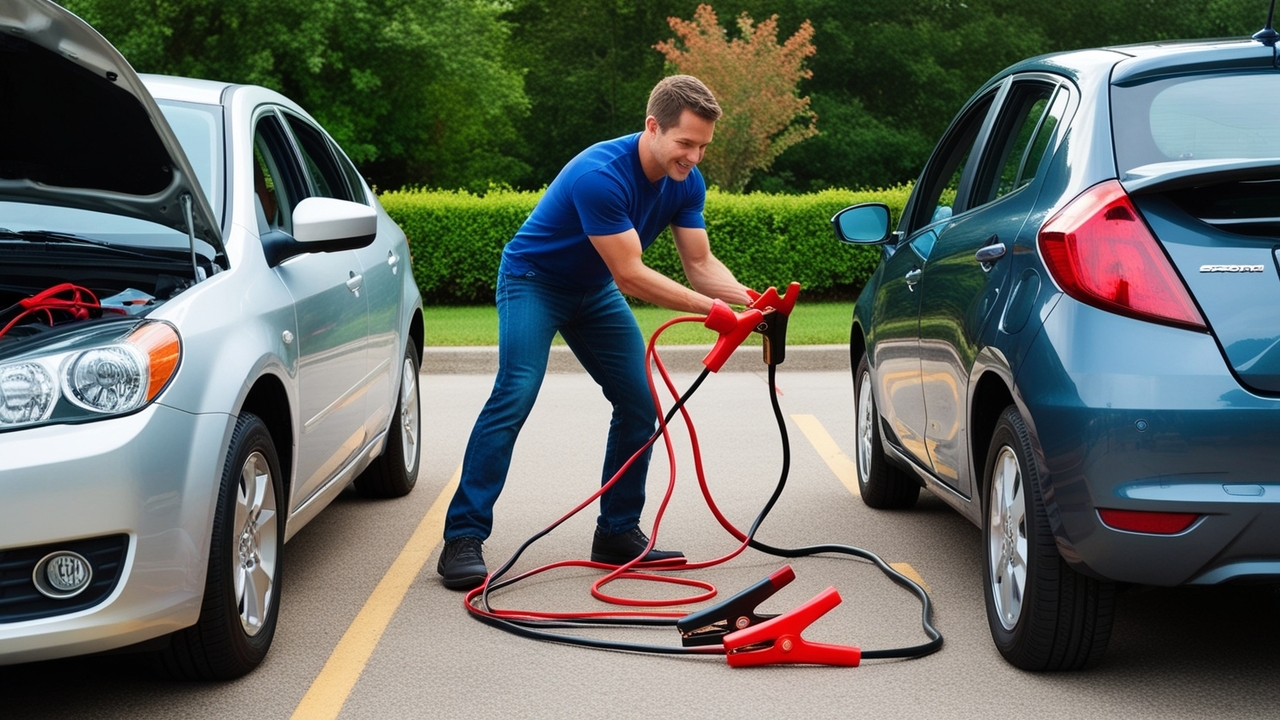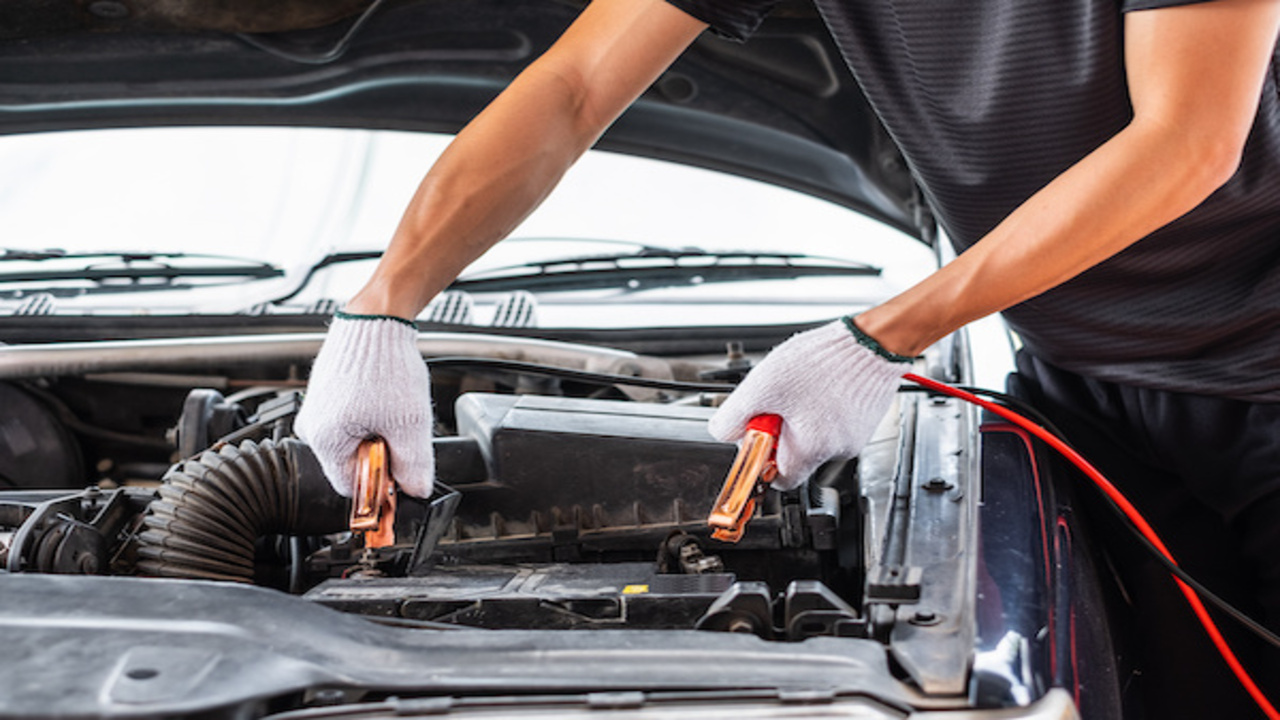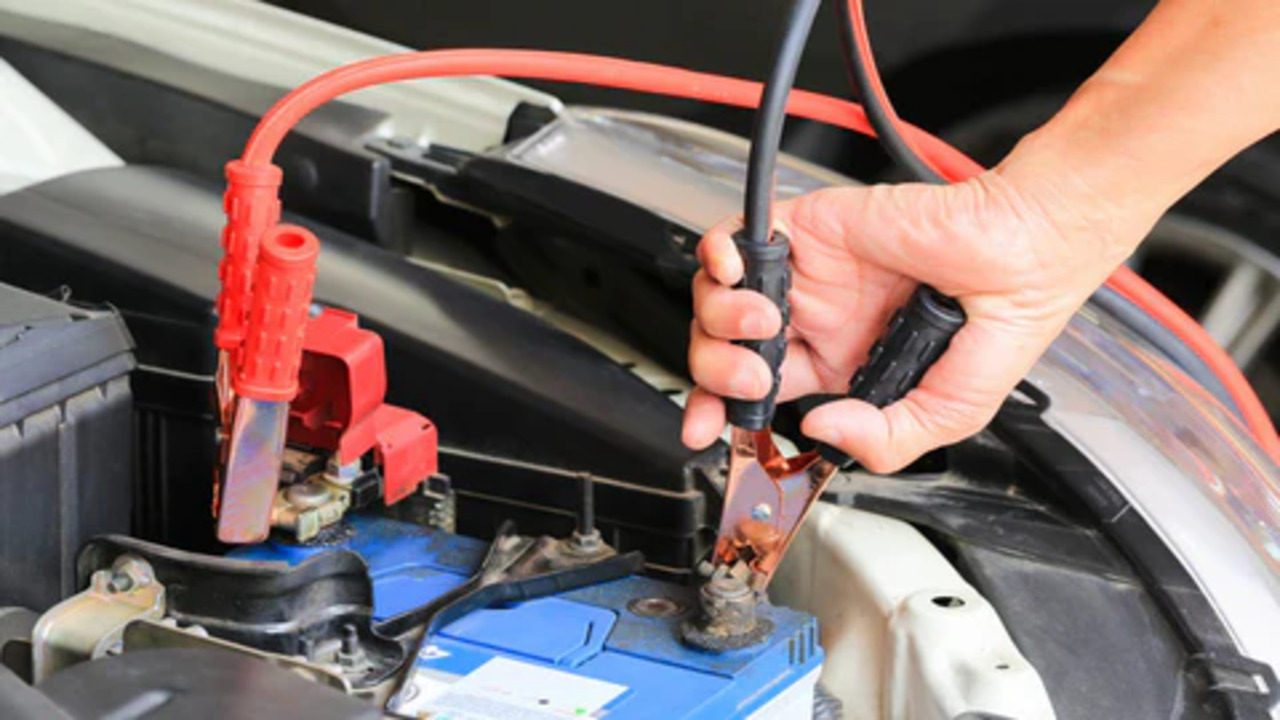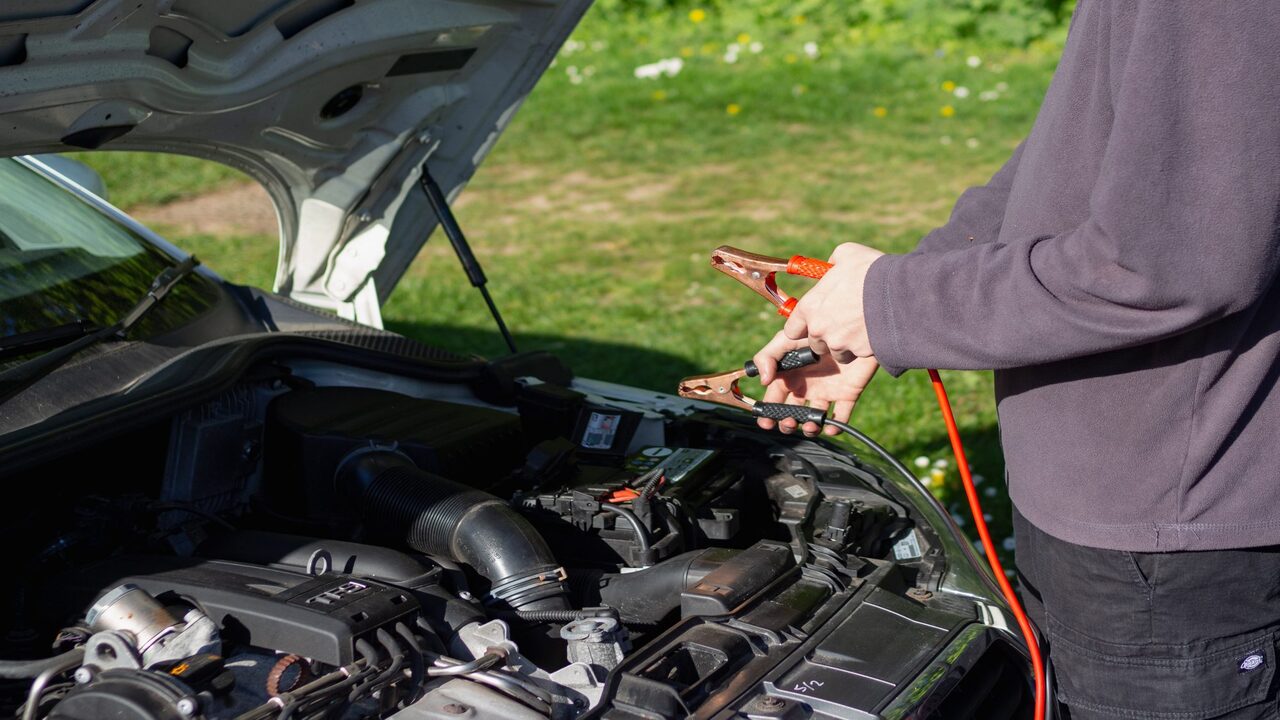Jumping a car can seem daunting, especially if you’ve never done it before. But with the right knowledge and tools, like jumper cables, you can get your vehicle running in no time. Whether you’re dealing with a dead car battery or just want to be prepared for emergencies, here’s a straightforward guide on how to jump start a car safely.

What You’ll Need:
- Jumper Cables: These come with two metal clamps—red and black.
- A Working Vehicle: This will serve as the donor car with a good battery.
- A Parking Brake: Ensure both vehicles are secure.
- Safety Gear: Gloves and safety glasses are a good idea.
Steps To Jump Start A Car

To jump start a car, park a working vehicle close to the dead car and secure both with the parking brake. Connect the red clamp to the positive terminal of the dead car battery, then to the positive terminal of the working battery.
Attach the black clamp to the negative terminal of the working battery, and the other end to a metal surface on the dead car. Start the working vehicle, wait a minute, then try starting the dead car. Once it starts, remove the cables in reverse order.
Step 1: Prepare The Vehicles
- Park the Second Vehicle: Position the working vehicle, also known as the donor car, close to the dead car. Ensure that both vehicles are facing each other but do not let them touch. Ideally, there should be about 18 inches of space between the two vehicles to allow easy access to both battery compartments.
- Engage the Parking Brake: Before proceeding, engage the parking brakes on both vehicles. This is essential for preventing any movement during the jump-starting process, ensuring safety while you work on the batteries.
Step 2: Open The Hoods

- Locate the Battery: Open the hoods of both cars and identify the car batteries. Look for the positive terminal, marked with a “+” sign, and the negative terminal, marked with a “−” sign. Note that some car batteries may be hidden under covers, in the trunk, or even under the seats, especially in hybrid vehicles. Consult your owner’s manual if you have difficulty locating the battery.
Step 3: Connect The Jumper Cables
- Identify the Clamps: Take your jumper cables and identify the color-coded clamps. The red clamp is for the positive terminal, and the black clamp is for the negative terminal. Ensure that the clamps are in good condition and free of corrosion, as damaged cables can lead to ineffective connections.
- Attach the Cables:
- Red Clamp: Connect one end of the red clamp to the positive terminal of the dead car battery. Make sure the connection is secure. Then, attach the other end of the red clamp to the positive terminal of the working battery.
- Black Clamp: Connect the black clamp to the negative terminal of the good battery. Instead of attaching it to the dead battery’s negative terminal, secure the other end of the black clamp to a clean, unpainted metal surface on the engine block or a sturdy part of the dead vehicle. This minimizes the risk of sparks occurring near the battery, which could ignite any hydrogen gas released during the process.
Step 4: Start The Working Vehicle

- Start the Good Car: Turn on the ignition of the working vehicle. Let the engine run for about one to two minutes. This duration allows the working battery to transfer power to the dead battery effectively. Keep an eye on any dashboard lights that may indicate issues with the working vehicle.
Step 5: Start The Dead Vehicle
- Try to Start the Dead Car: After allowing the working car to run for a minute, attempt to start the dead vehicle. Listen for sounds indicating the engine is trying to start. If it doesn’t start immediately, give it another minute or two before trying again. It may take several attempts, so be patient.
Step 6: Disconnect The Cables

- Remove the Cables in Reverse Order: Once the dead vehicle starts, it’s important to disconnect the jumper cables in the reverse order of how you attached them:
- First, remove the black clamp from the engine block of the previously dead vehicle.
- Next, remove the black clamp from the working vehicle.
- Then, take off the red clamp from the working battery.
- Finally, remove the red clamp from the dead battery.
- Place the Cables Safely: As you disconnect the cables, ensure that the clamps do not touch each other or come into contact with any metal surfaces, as this can cause sparks.
Step 7: Let The Jumped Car Run
- Keep the Engine Running: After successfully jump-starting the car, let it run for at least 15 to 30 minutes. This time allows the alternator to recharge the battery sufficiently. If possible, take the car for a drive, as driving at higher RPMs can help charge the battery more effectively. Watch for any dashboard warning lights that may indicate further issues.
Additional Tips For Successful Jump Starting

- Safety First: Always wear gloves and safety glasses when handling batteries and jumper cables to protect against acid and corrosion.
- Check for Corrosion: Before connecting the cables, inspect both battery terminals for corrosion or dirt. If necessary, clean them with a mixture of baking soda and water to ensure a good connection.
- Battery Age: If your battery is over three years old, consider having it tested. An old battery may not hold a charge even after a jump start.
- Seek Professional Help: If you continue to have issues with your battery or if the car doesn’t start after multiple attempts, consult a mechanic or consider roadside assistance.
Battery Tips For Maintenance
- Regularly check your battery terminals for corrosion.
- Ensure your alternator is functioning properly to avoid dead batteries.
- If your battery is more than three years old, consider having it tested at an auto parts store.
Conclusion
Jump-starting a car is a valuable skill that can help you quickly get back on the road when faced with a dead battery. By following the proper steps—connecting jumper cables correctly and prioritizing safety—you can revive your vehicle with ease.
Always keep jumper cables on hand, perform regular maintenance on your car battery, and seek professional assistance if issues persist. With these tips, you’ll be prepared for any battery-related emergencies.
Frequently Asked Questions
1.How Long Should I Leave The Working Vehicle Running?
Typically, leaving it running for 1-2 minutes should be sufficient, but you can allow it to run longer for a better charge.
2.Can I Use A Portable Jump Starter Instead Of Jumper Cables?
Yes! A portable jump starter is a great alternative and can be used easily without needing another vehicle.
3.What If The Jumped Car Still Won’t Start?
If the vehicle doesn’t start, it could indicate a more serious issue with the starter or battery that needs professional diagnosis.
4.Is It Safe To Connect The Black Clamp To The Dead Battery?
It’s safer to attach the black clamp to a metal surface on the engine block of the dead car to minimize the risk of sparks.
5.How Can I Tell If My Car Battery Needs To Be Replaced?
Frequent jump starts, dimming lights, or a slow engine crank can all be signs that your battery is reaching the end of its life.
6.Should I Call For Roadside Assistance If My Car Won’t Start?
If you’ve tried jump-starting and the car still doesn’t respond, calling a tow truck or roadside assistance is a good idea for professional help.







